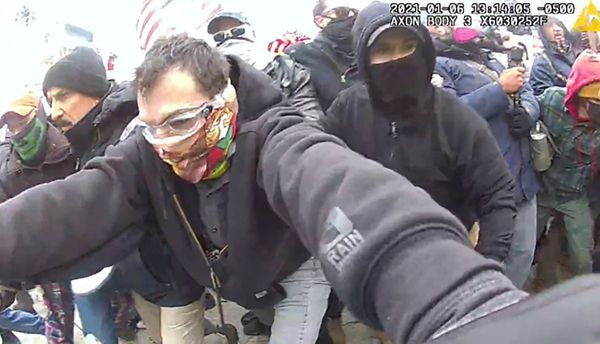In the dusty realms of ancient ruins and forgotten civilizations, a new explorer has emerged-one that doesn’t wear a fedora or carry a whip, but instead wields algorithms and neural networks. Artificial Intelligence is transforming the entire field of archaeology from the way of discovering, analyzing, and interpreting ancient artifacts.
From the deep jungles of Central America to the bottom of the Mediterranean Sea, AI is now helping archaeologists uncover the secrets that had been there for millennia. Text author: Kirill Yurovskiy.
The Digital Indiana Jones: How AI is Changing the Game
Those days are long behind us when archaeology used to be a laborious process of manual excavation and educated guessing. Today’s archaeologists are armed with various high-tech tools, but AI is at the helm. Intelligent systems can handle big data, identify invisible patterns to the human naked eye, and predict, making excavations much more precise than ever before.
Satellite Imagery Analysis: A Bird’s Eye View of History
Probably the most innovative use of AI in archaeology pertains to the analysis of satellite imagery. This has now involved scanning tens of thousands of square kilometers of terrain with the speed it would otherwise take humankind.
Our AI system, which we call ‘ArchaeoScan’, can pick up subtle variations in the growth of vegetation, the composition of the soil, and the features of topography. In this sense, it’s like having a thousand archaeologists scanning the earth at the same time, day and night,” said Dr. Sarah Johnson, lead researcher at TechDig Institute.

ArchaeoScan has already scored some great wins. In 2023, it discovered more than 50 previously undiscovered Mayan sites in the Yucatan Peninsula, including what could be the largest Mayan city yet to be discovered. It does this by using multispectral satellite images to pick out the telltale signs of ancient human activity, which had previously escaped surveys.
LiDAR and AI: Peeling Back the Layers of Time
LiDAR technology added revolution to the field of archaeology. It is possible to “look” through dense layers of vegetation at the earth’s surface and create highly detailed 3D maps. And when combined with AI, LiDAR just amplifies that effect.
We have created an AI system that can automatically process LiDAR data to identify potential archaeological features,” claims Dr. Alex Rivera of the Global Heritage Foundation. “It can, with 95% accuracy, differentiate between man-made and natural structures in the most wooded areas.”
This AI-driven LiDAR analysis has exposed an enormous ancient network of Khmer cities surrounding Angkor Wat in Cambodia. The AI was able to pick up slight elevation changes and geometric patterns, hinting at the existence of roads, canals, and foundations for buildings that unearthed a massive urban landscape covered by centuries of jungle overgrowth.
Deep Learning for Artifact Classification
Once the artifacts are unearthed, AI plays a very important role in assessing and categorizing them. These deep learning models, seeing millions of images related to known artifacts, rapidly classify new findings with almost astonishing accuracy.
According to the creator of ArtifactNet AI, Dr. Yuki Tanaka, “Our system can classify pottery shards, coins, and other common artifacts with an accuracy that rivals expert archaeologists. But more importantly, it can identify unusual or unique items that might otherwise be overlooked.”
This year’s highlight is the story of ArtifactNet, as a small clay tablet unearthed in Turkey was proclaimed to be an entirely new form of early writing. As it bore subtle patterns not found in any known script, AI flagged it as “anomalous.” This led researchers on a groundbreaking discovery into how writing spread in the ancient Near East.
AI in the Lab: Bringing the Past into Focus
The application is not limited to the excavation site. In labs from all over the world, intelligent systems are helping in extracting information from artifacts which was never possible before in history.
Reconstructing the Past: AI-Powered 3D Modeling
The task of archaeologists working with fragmentary artifacts is extremely challenging. It is a laborious process, based on educated guesswork, to put together shattered pottery or an eroded statue. Now, AI is taking over to accelerate and perfect this process.
The “Reconstructor” AI developed by a team at MIT uses advanced 3D scanning techniques and machine learning to virtually reassemble fragmented artifacts. According to lead developer Dr. Emma Chen: “We feed the AI thousands of 3D scans of broken artifacts. It learns to analyze shape, texture, and composition for every piece and comes up with possible reconstructions. It can test millions of combinations in seconds – something a team of humans could not do in years. Follow the link to read more.
Stunning the archaeological world, Reconstructor brought a highly broken Roman mosaic from Leicester, UK. AI proposed the reconstruction that unfolded a yet unknown mythological scene inside it, thereby giving an insight into new Roman art in Britain.
Deciphering Ancient Texts: Natural Language Processing Meets Ancient Scripts
One of the most interesting uses of AI in archaeology is epigraphy, that is, the study of ancient inscriptions. The methods developed for the analysis of modern languages are applied now to decipher and translate ancient scripts.

According to the Digital Rosetta Project Dr. Mohammed Al-Fayed, “We’ve actually trained our AI on all known ancient script, starting from Sumerian cuneiform, all the way to Linear B; it can actually now begin to assist us in understanding newly discovered texts by posing possible interpretations, based on a given context, and then known linguistic patterns.”
The Digital Rosetta AI has already partially deciphered the mystifying Indus Valley script, throwing up a set of phonetic values for some of the symbols that have long puzzled the researchers. Human experts still verify and interpret the output but the system has accelerated the rhythm of epigraphic research far beyond.
The Future of AI in Archaeology: Challenges and Opportunities
The potential applications of AI in archaeology are as limitless as the development itself. Researchers are already researching autonomous drones for site surveys, ground-penetrating radar powered by AI for non-invasive excavation, and even predictive models predicting the likelihood of finding specific types of artifacts in particular locations.
However, introduction of AI into archaeology is risky. As noted by International Council for Archaeological Ethics chair Dr John Smith: “However powerful AI is, there’s a risk of its leading to a de-skilling of the archaeological profession. There is still nothing to replace the trained eye and intuition of an archaeologist with experience.”
Other concerns include data privacy, for instance, whether AI may be used to plunder or auction illegal antiquities. Because of these reasons, most archaeological organizations are now formulating guidelines on the ethical use of AI in archaeology.







